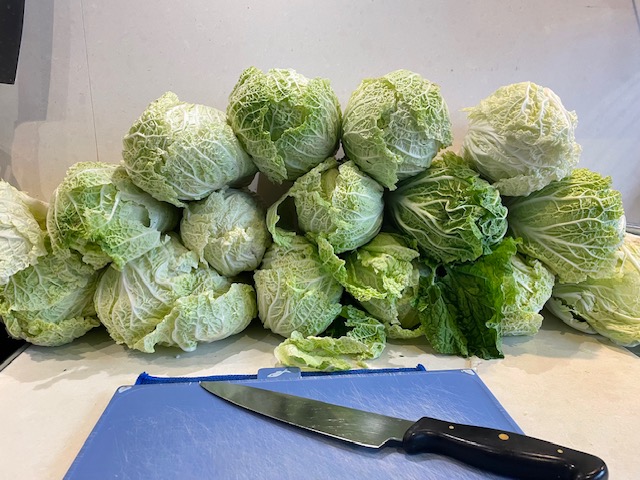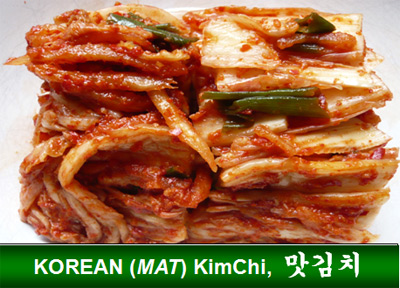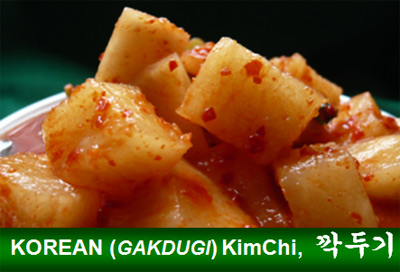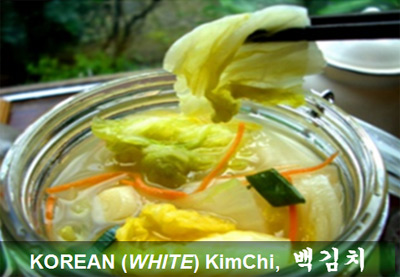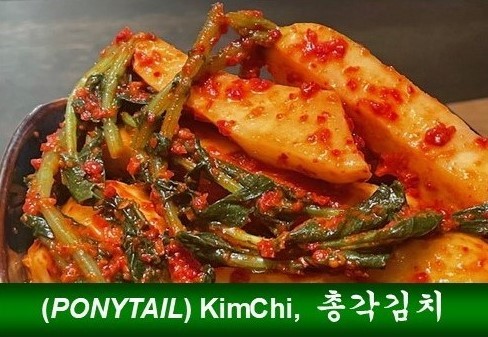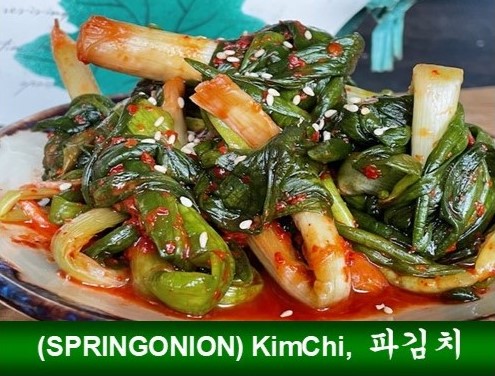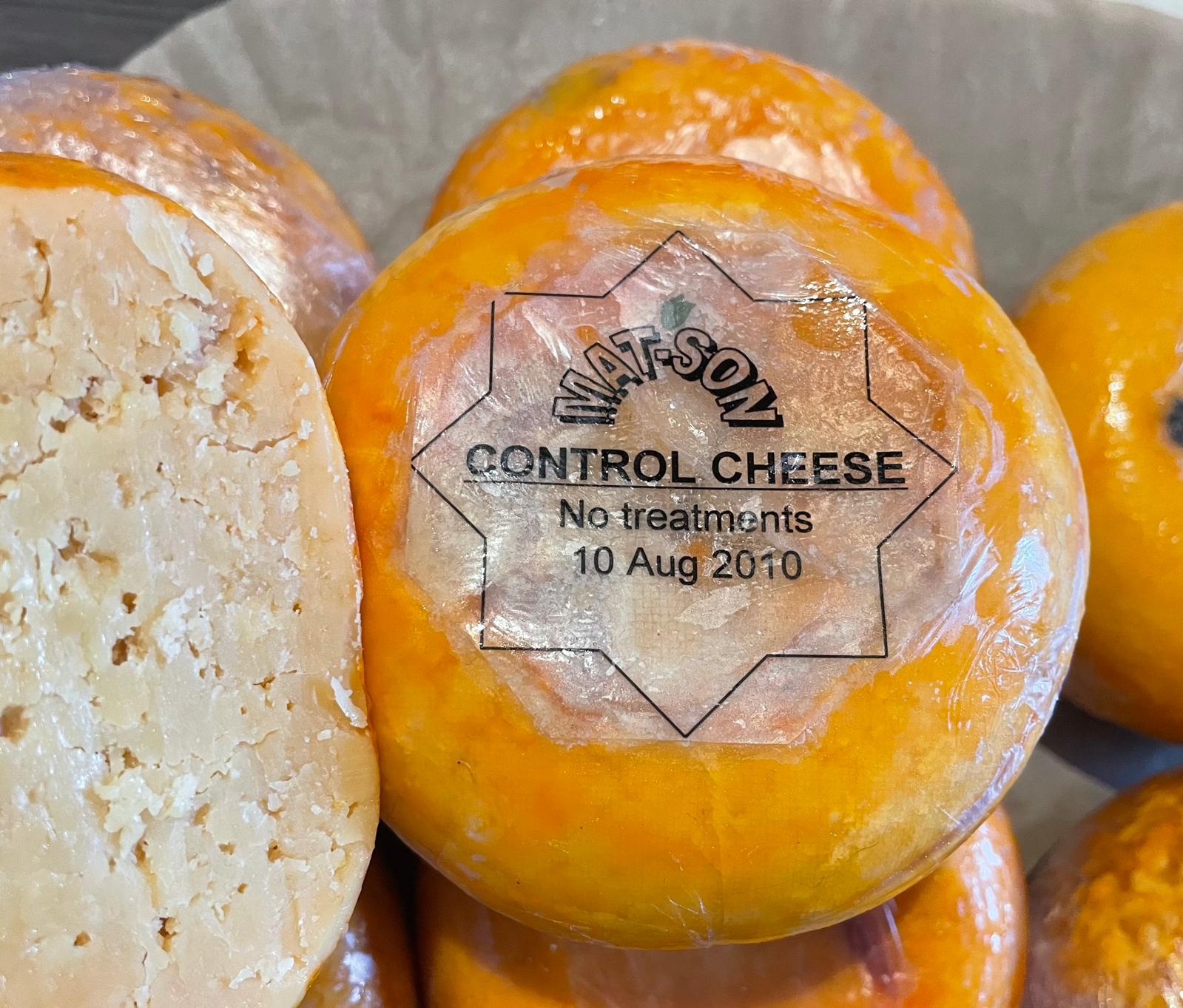KimChi is a fermented Korean dish which can be made with various salted vegetables such as cabbage, radish or cucumber. It is a most popular Korean dish, and is highly valued with its nutritional and health benefits.
> Fermentation of kimchi is done mainly by Lactic acid bacteria that are already in the ingredients. They become dominant as they grow producing lactic acid by converting sugars in cabbages, bae-chu. Well fermented kimchi depends on amount of sugars and good lactic acid bacteria which have beneficial effects on human intestinal micro flora. Kimchi contains 10-100 times higher lactic acid bacteria and lactic acid than yogurt.
> Lactic acid bacteria has anti-microbial activity against undesirable micro organisms such as E.coli. Lactic acid bacterias e.g, L.mesenteroides, L.brevis, L.fermentum & L.plantarum in kimchi, especially L.plantarum showed the immunostimulation effect, and inhibited the synthesis of pro-carcinogens in colon cancer.
> Low caloric food & high in protein are originated from ingredients such as fermented fish such as anchovy, shrimp or oyster. Flavour of kimchi different dramatically depend on which fish sauce you choose. The choice is rather personal preference. Sugars contents in the cabbage, bae-chu, are mainly glucose, mannose, fructose, galactose & arabinose. Minerals are mainly calcium & phosphorus. An important source of Vitamin B group, carotene & ascorbic acid. Dietary fiber, ascorbic acid, carotene, red pepper & garlic suppress the formation of carcinogenic or mutagenic compounds, prevent constipation & control intestinal micro flora.
Origin of KimChi: Salted cabbage pickles were brought into Korea during Shilla (A.D.654-935) and Korea (A.D.918-1392) dynasties, and were modified to suit to Korean taste. Until Korea dynasty, the vegetable used for kimchi was mainly with salted radish. As red peppers(chilli) were imported to Korea, and first used for kimchi making in 1766. Thereafter, a whole cabbage(bae-chu) kimchi with red peppers(chilli) became popular during Rhee dynasty (A.D.1392-1910).
(Information extracted from Korean Food Research Institute)
| Nutrients | per 100g | Nutrients | per 100g |
|---|---|---|---|
| Food Energy | 32 Kcal | Moisture | 88.4 g |
| Crude Protein | 2.0 g | Crude Lipid | 0.6 g |
| Total Sugar | 1.3 g | Crude Fiber | 1.2 g |
| Crude Ash | 0.5 g | Calcium | 45 mg |
| Phosphorus | 28 mg | Vitamin A | 492 IU |
| Vitamin B1 | 0.03 mg | Vitamin B2 | 0.06 mg |
| Niacin | 2.1 mg | Vitamin C | 21 mg |
*CAN I STILL EAT FULLY RIPENED KIMCHI? HOW?
As Kimchi ripens, it develops more sour taste which is induced by lactic acid bacteria (LABs). The higher sourness the higher LABs contain. A typical recipe using of such matured Kimchi is mainly made for a stew dish called ‘Kimchi-jigae’, ‘kimchi pancake’, or ‘fried rice with kimchi’. They are another wonderful flavours you can experience from kimchi!
*IS KIMCHI REALLY EFFECTIVE FOR WEIGHT CONTROL?
Korean made Kimchi is rich in LABs and dietary fibers, which accelerate the movement of the intestines preventing the constipation and colon cancer. Since it is a low calorie fermented food that is rich in vitamins and minerals, it can be effective on the weight control.
*AS THE FERMENTATION CONTINUES:

